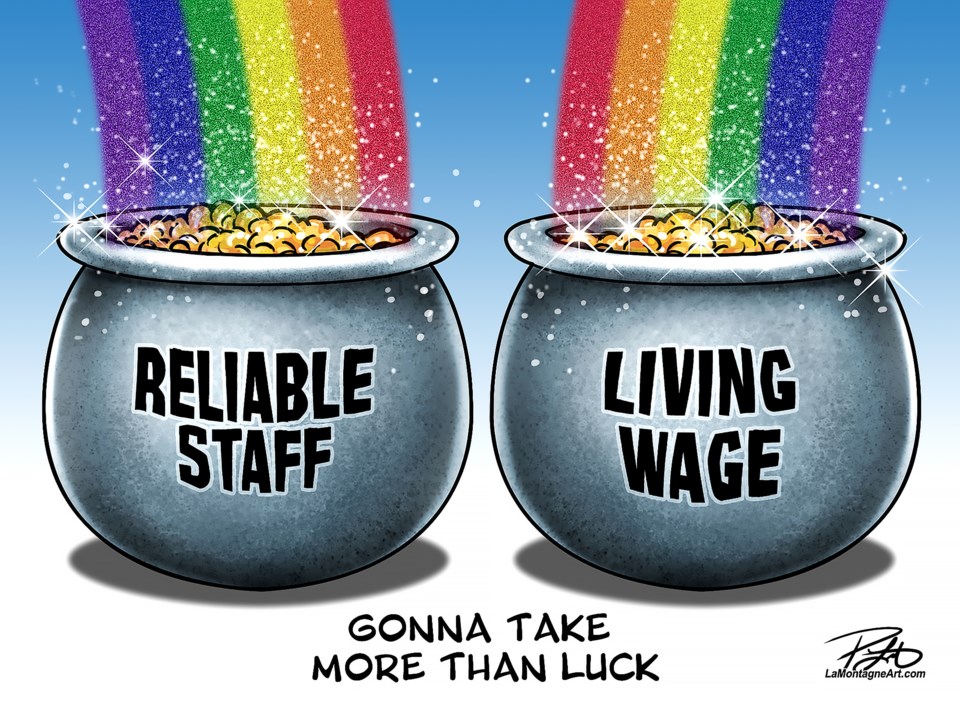The Bow Valley is in an almost consistent state of struggling for employees.
Housing and cost of living are often the main inhibitor of having fully staffed workplaces, but equally important is the ability to earn a decent wage to be able to moderately afford the area communities.
The Alberta Living Wage Network’s latest annual living wage study found an hourly wage of $38.80 is needed to live in Canmore. While Banff isn’t part of the living wage network, it would likely be in the same ballpark.
Though the living wage is an indicator rather than a mandate, there’s little doubt about the expensive nature of living in the valley.
From groceries to housing, the cost of living in one of the most scenic places in Canada can be astronomical for some and outright prohibitive for many.
It’s incumbent on employers – particularly large ones with smaller businesses often in the same fight to get by themselves – to provide as much of a living wage as possible to their workforce.
Every time a wage doesn’t keep up with inflation or cost of living adjustments, it’s a decrease in pay since the money has to come from somewhere for people to continue to pay bills and necessities.
Not buying a cup of coffee or lunch here and there or choosing Netflix over Disney+ instead of both help short-term, but eventually people run out of things to cut to continue to survive.
A key aspect of the Labour Market Recruitment and Retention Strategy update that was accepted by Canmore council highlights the pay discrepancy of what’s expected between employees and employers.
Of employers surveyed, only 7.6 per cent offered employment at more than $30 an hour, but 49.9 per cent of employees asked said they needed a salary of at least $30 an hour.
Though not shocking, it emphasizes the need to have a better understanding of what’s needed to get by for a worker and employer. As unfair as it may sound, an employer should make more since they’re putting in the financial risk with a business often at the mercy of consumer demand.
But it’s not without the necessity of meeting the requirements of employees. It’s always more cost-effective to retain long-term employees who are loyal and want to see a business succeed rather than a steady flow of change and turnover.
The worse employees are treated, the more likely they are to leave or explore the potential of unionization.
Several employers in the valley should be given credit for finding ways to support employees, understanding the dire situation since they themselves likely experience the same struggle.
Many employers provide housing or a form of housing support as well as other methods such as offering discounts to other necessities that may not be immediately reflected on a person’s paycheque, but can reduce expenses.
The towns of Banff and Canmore each offer affordability-related programs to lessen the financial crunch felt by people and each has an affordable housing program that significantly erases the most expensive aspect of living in the valley.
Roam transit erasing the need for a personal vehicle for many people to get to areas such as Banff, Canmore, Lake Louise and Banff National Park can equally cut down on costs with fewer expenses such as gas, insurance and maintenance.
For an area to thrive and succeed, all organizations need to not only work together to ensure people can continue to afford to live in the region, but also that employees are well looked after.
It doesn’t matter if you’re a municipality, a small or large business or the owners of the Outlook, ensuring your employees are able to financially survive is a necessity for any organization.
There is no greater resource to a business than its employees.




